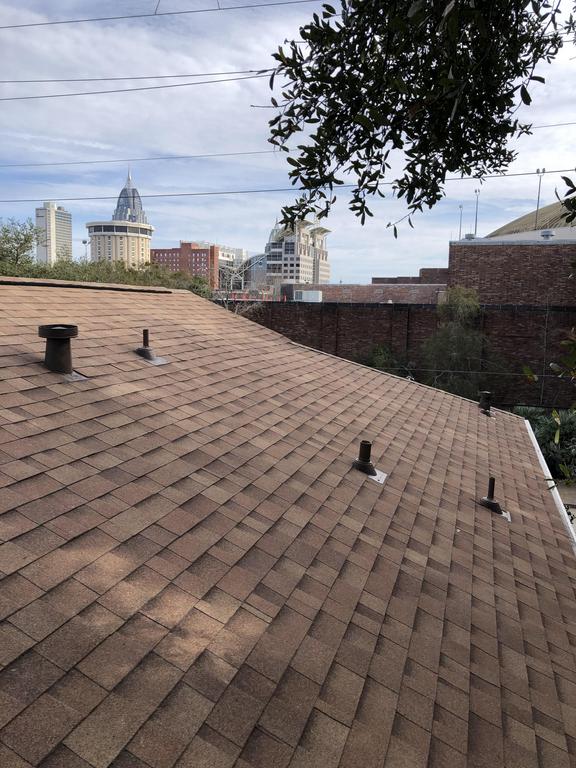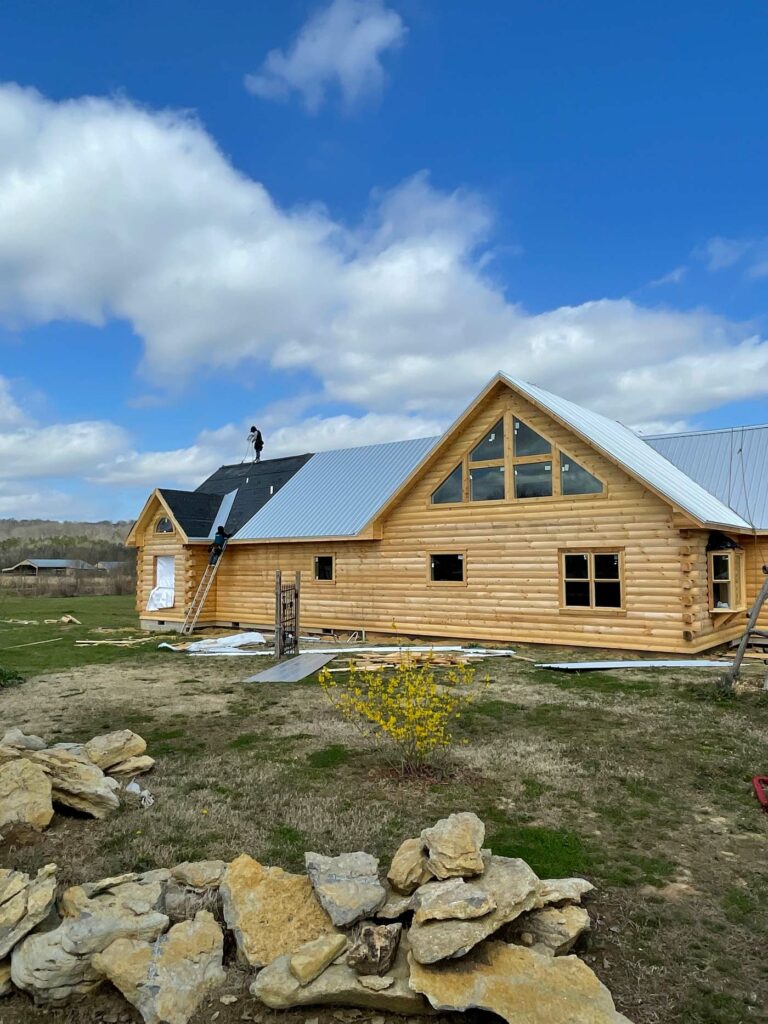Roofing work is a high-risk job that requires the utmost attention to safety measures. The importance of safety when working on roofs can never be overemphasized, given the potential for falls from heights, which can lead to severe injuries or even fatalities. Moreover, workers are often exposed to harsh weather conditions, construction materials, and equipment that can pose serious hazards. Therefore, ensuring the right roofing safety equipment is in place is not just an option, but it is a necessity.
The OSHA (Occupational Safety and Health Administration) mandates that employers must provide their roofing workers with appropriate safety equipment to prevent accidents and injuries. The use of suitable roofing safety equipment is not only a legal requirement but also a life-saving measure. This equipment ranges from personal protective gear to tools designed to keep workers safe on steep slopes and high surfaces. Therefore, finding the right roofing safety equipment is a critical step in ensuring the safety of workers.
The essence of this article is to serve as a guide in helping both employers and workers understand the importance of roofing safety equipment. It will provide insights into different types of safety tools available, their uses, and how to choose the right ones for specific roofing tasks. By understanding and implementing these safety measures, the risks associated with roofing work can be significantly reduced.
Understanding the Risks
Roofing work is riddled with potential hazards that can lead to serious accidents or injuries if not properly managed. Common dangers include falling from heights, which is the leading cause of fatalities in the roofing industry, being hit by falling objects, stepping on sharp objects, and exposure to harmful substances. Other risks include electrical hazards from overhead power lines, burns from hot bitumen, and injuries from using tools and equipment. The right safety equipment can mitigate these risks, protecting workers from a myriad of dangers they face daily.
Statistics on roofing accidents are sobering reminders of the importance of safety in this line of work. According to the Occupational Safety and Health Administration (OSHA), falls account for about 34% of on-the-job fatalities in the construction industry, with roofers being particularly at risk. Furthermore, the Bureau of Labor Statistics reports that the incidence rate of injuries and illnesses in the roofing industry is higher than the national average for all occupations. These statistics highlight the undeniable importance of having adequate safety equipment in place.
Understanding the risks associated with roofing work is a critical step in selecting the right safety equipment. The importance of protective gear cannot be overstated – it is more than just a regulatory requirement, it’s a life-saver. With comprehensive understanding and smart choices, employers can create a safer work environment for their roofers, ensuring their well-being while maintaining productivity.
Roofing Safety Equipment Basics
Rooftop work embodies a host of potential hazards. Therefore, it’s important to discern the essential roofing safety equipment necessary to ensure a safe working environment. The fundamental kit should consist of a safety harness, roofing boots, safety goggles, gloves, a helmet, and knee pads. A safety harness is a critical piece of safety equipment designed to protect workers from fall hazards. It’s designed to distribute the force of a fall across a worker’s body, minimizing injury.
Roofing Boots
Roofing boots, on the other hand, provide grip, support, and protection against sharp objects. They should be sturdy, waterproof, and slip-resistant to prevent accidents. Safety goggles play a pivotal role in protecting the eyes from harmful substances, particles, and UV rays. They should be snug-fitting, comfortable, and provide a clear field of vision.
Gloves
Gloves are also essential to protect the hands from cuts, abrasions, and exposure to harmful substances. Helmets, or hard hats, protect workers from head injuries due to falling objects, bumps, and electrical hazards. They should be lightweight, adjustable, and have a shock-absorbing lining.
Knee Pads
Finally, knee pads provide cushioning and support, reducing the risk of knee injuries and conditions such as bursitis or housemaid’s knee. It’s crucial to remember that each piece of equipment has a specific role in ensuring the safety of workers. Therefore, every item is vital and should meet the necessary safety standards and regulations.
By investing in high-quality, durable, and reliable safety gear, employers can create a safer work environment, reducing the risk of accidents and injuries. Roofing World recognizes the importance of prioritizing safety in the workplace and encourages all employers to invest in top-notch safety gear to ensure the well-being of their workers.
Choosing the Right Roofing Safety Equipment
When it comes to choosing the right roofing safety equipment, several factors should be taken into consideration.
Roof Type
The type of roof, for instance, is a critical determinant. Different roofs have unique characteristics that may require specialized equipment. For example, a flat roof may not require as much fall protection as a steeply pitched roof. Similarly, the nature of the work also significantly influences the type of safety gear required. A roofer engaged in heavy-duty work may need more robust equipment than one doing lighter tasks.
Equipment Safety
Ensuring that the safety equipment fits properly and is comfortable to wear is equally vital. Ill-fitting equipment can pose a significant risk. If a safety harness is too loose, it may not provide the necessary support in case of a fall. On the other hand, equipment that’s too tight can limit movement and cause discomfort. Therefore, roofers should try on equipment before purchase to ensure a proper fit. Comfort is also a critical factor, particularly for gear that will be worn for extended periods. Equipment should not chafe, pinch, or restrict movement.
Quality and Durability
The role of quality and durability cannot be overstated when choosing roofing safety equipment. High-quality gear is generally more reliable and more likely to withstand the harsh conditions typical of roofing work. Durable equipment, made of strong materials, can handle the wear and tear of regular use, making it a cost-effective choice in the long run. Investing in quality and durability is a smart move that can lead to significant savings and improved safety in the future.
Proper Use and Maintenance of Roofing Safety Equipment
Following the careful selection of your roofing safety equipment, understanding how to properly use and maintain these pieces becomes paramount. The right knowledge can make a significant difference, not just in ensuring your safety, but also in the longevity of the equipment.
Essential Safety Equipment Guidelines
To begin with, it’s crucial to familiarize yourself with the instructions provided by the manufacturer. Each piece of safety equipment, whether it’s a harness, safety net, or guard rails, comes with a unique set of guidelines. These outline how to wear, adjust, and handle the equipment to maximize safety. For instance, harnesses should be snug but comfortable, with all straps and buckles fastened correctly, while safety nets should be installed as close as possible to the work area to minimize fall distance. Ignoring these instructions can lead to improper use, reducing the effectiveness of the equipment and potentially putting your safety at risk.
Vital Maintenance for Safety Gear
In addition to using equipment correctly, regular maintenance and inspection are critical. Over time, wear and tear can compromise the integrity of safety equipment, making it less effective at protecting you. It’s recommended to inspect your equipment before each use. Look for signs of damage such as fraying on harness straps or rust on metal components. Some equipment, like safety nets, may require more frequent inspections, particularly after adverse weather conditions. Maintenance extends beyond inspections. It involves cleaning and storing the equipment properly. Most pieces can be cleaned with mild soap and water, but always check the manufacturer’s guidelines first. When storing equipment, keep it in a dry, cool place away from direct sunlight to prevent degradation.
Roofing World echoes the sentiment that even the highest quality equipment can fail if not used and maintained properly. By adhering to these tips, you ensure not only your safety but also the longevity and cost-effectiveness of your gear.
Training and Compliance
The necessity of training in the use of safety equipment cannot be overstated. Training should be the cornerstone of any safety program, providing workers with the knowledge and skills necessary to operate equipment safely and effectively. Without proper training, even the most advanced roofing safety equipment can fall short of providing the level of protection it was designed to offer.
Comprehensive Safety Training for Roofing
In addition to understanding how to use each piece of equipment, workers need to have a comprehensive understanding of the potential hazards associated with their tasks. This knowledge allows them to make informed decisions and take the necessary precautions when working on a roofing project. Training helps to instill a safety-first mentality and promotes a culture of responsibility and vigilance among the workforce.
OSHA Roofing Safety Regulations
The Occupational Safety and Health Administration (OSHA) has set forth a series of regulations for roofing safety equipment to ensure the protection of workers. These guidelines provide a framework for selecting, using, and maintaining roofing safety equipment. A thorough understanding of these regulations is vital, as non-compliance can result in hefty fines and, more importantly, compromise the safety of workers.
OSHA Roofing Safety Guidelines
OSHA regulations cover a wide range of topics, including fall protection, ladder safety, and personal protective equipment (PPE). For instance, OSHA mandates that a fall protection system be used for roofing work at heights of six feet or more. This could involve the use of guardrails, safety nets, or personal fall arrest systems, depending on the nature of the work and the specific circumstances of the job site.
In conclusion, training in the use of safety equipment and compliance with OSHA regulations are two key elements in ensuring the safety of roofing workers. A commitment to both aspects not only safeguards the well-being of workers but also contributes to the successful and timely completion of roofing projects. Roofing World emphasizes the significance of these practices in promoting a secure and efficient work environment within the roofing industry.
Conclusion
In conclusion, the importance of selecting and using the right roofing safety equipment must be balanced. As we have elaborated throughout the article, these devices play an integral role in ensuring that roofers can execute their tasks safely and effectively. From harnesses to lanyards, helmets, and safety nets, every piece of equipment contributes significantly to reducing the risk of falls and other work-related accidents.
Remember, the right equipment is only as good as its user, hence the emphasis on proper training. Understanding and adhering to OSHA regulations is equally paramount in maintaining a safe workplace environment. These regulations are not mere suggestions but are designed and enforced to guarantee the safety and well-being of every worker. Ignorance or disregard of these rules can lead to severe consequences, including hefty fines and potential legal actions.
Therefore, as a roofer, your commitment to safety should be non-negotiable. It is not just about protecting yourself but also about preserving the integrity of your profession. Investing in the right roofing safety equipment, coupled with comprehensive training and adherence to safety regulations, is a wise and necessary action. Ultimately, remember that there is no shortcut to safety. It is something that needs to be prioritized and maintained consistently. With the right mindset and the correct equipment, you can ensure that every roofing job is a safe one. Roofing World stands behind these principles, advocating for a safety-first approach in the roofing industry.
Name, Address, and Phone
Roofing World
1100 Corporate Dr, Birmingham, AL, 35242, US
(205) 964-5661
Social Media’s


